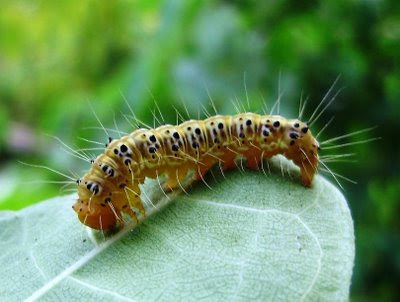The Life of Animals | lymantridae | type of caterpillar this one is a pretty horrendous animal Indonesia, because this animal pests attacking Indonesian society on a large scale, divided into various types, color characteristics of these animals are very, interesting but dangerous, want to know? The following report
The family Lymantridae comprises about 350 genera and 2,500 species worldwide. There are 11 species recorded from Britain, including the Vapourer, the Black Arches, and two species which have become extinct in the UK - the Reed Tussock and the Gipsy moth.
This species is found in woodland edge habitats, on scrubby grassland, along hedgerows, and in parks and gardens at altitudes between sea level and about 1000m.
The larvae of most of the Lymantridae have dense tufts of hair on their back, hence the popular name "tussock" moths. Other species including the Yellow-tail moth have larvae that are devoid of dorsal tussocks but have lateral tufts of hair instead. In some species such as the Brown-tail Euproctis chrysorrhoea the hairs have irritating properties which can cause a rash in susceptible people. Many tropical species of Lymantridae also have irritant or poisonous hairs.












